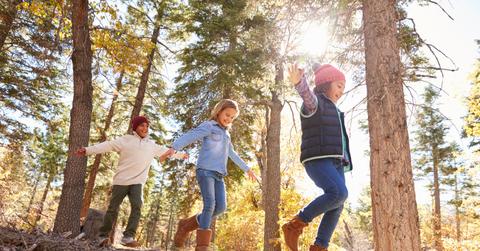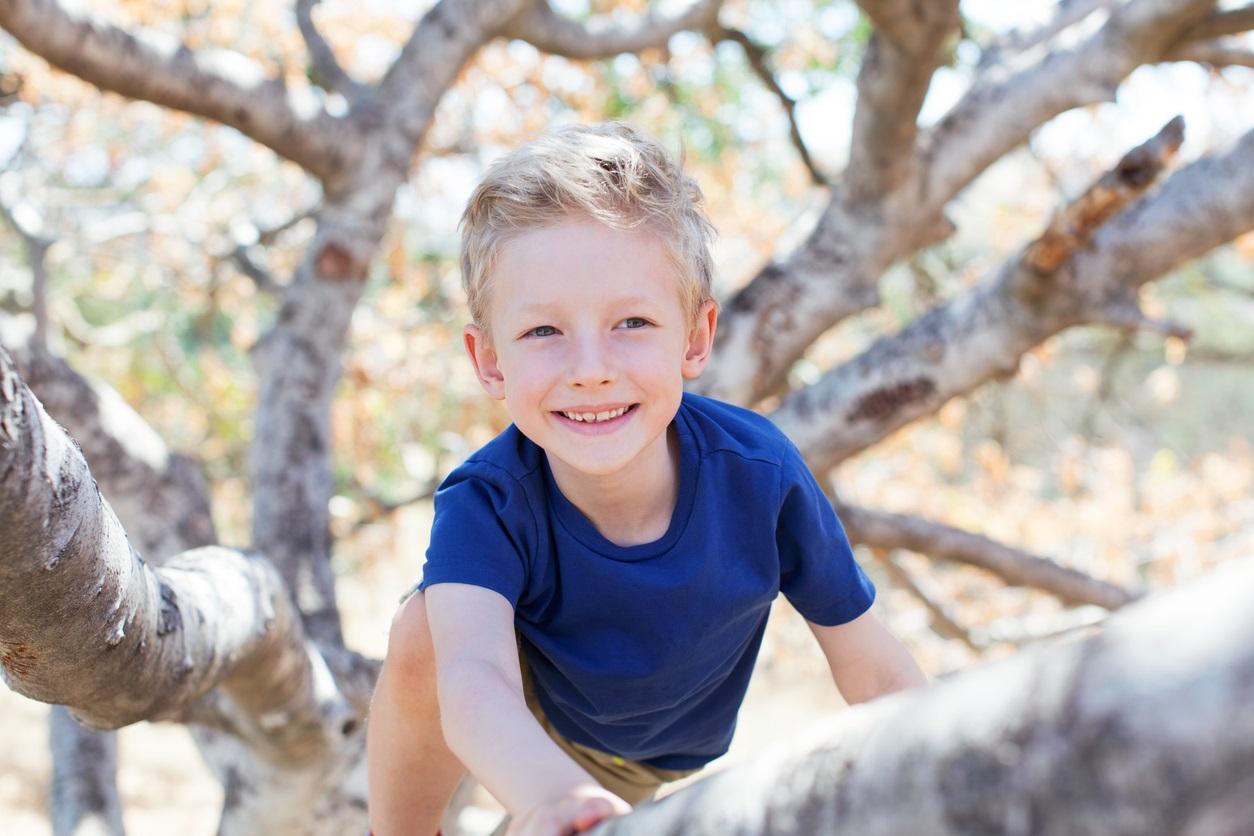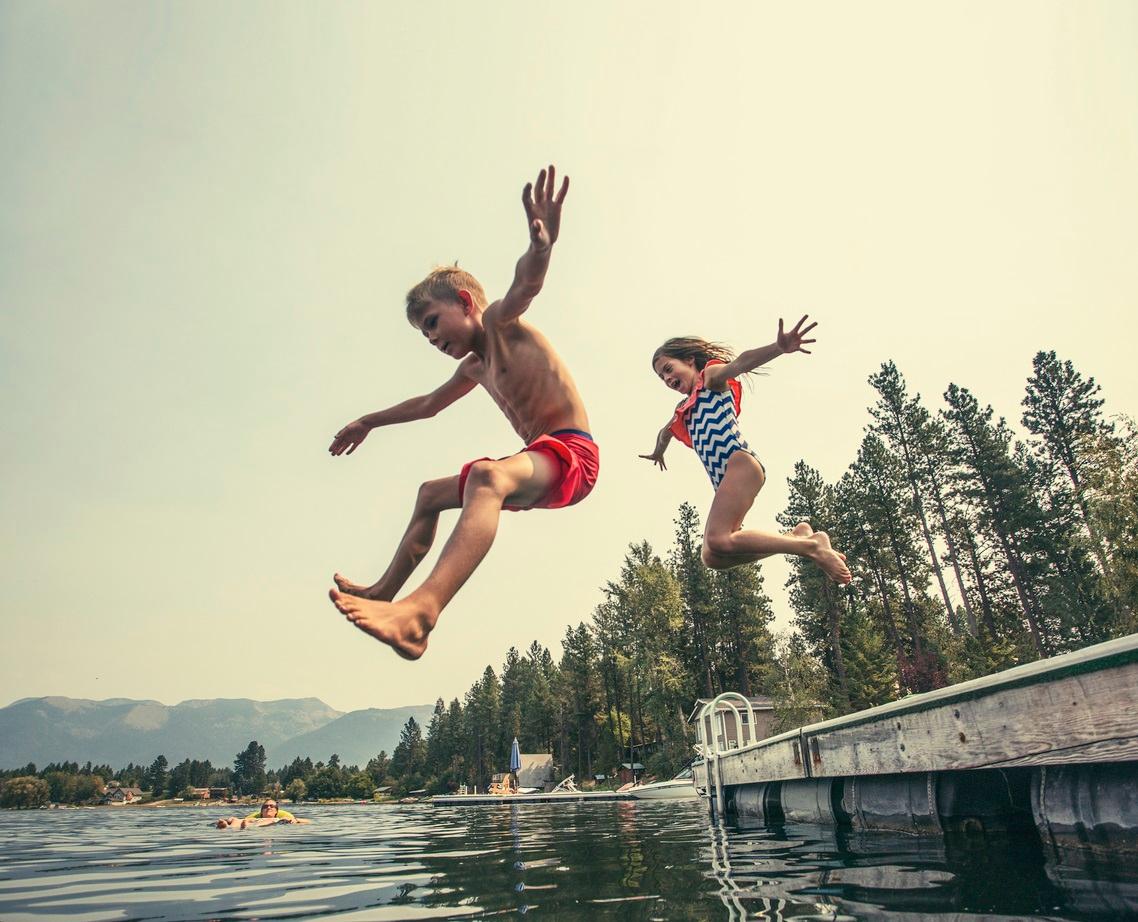This App Breaks Down The Basics Of Free-Range Parenting
Be honest: Do you tend to be overprotective? Do you want your kids to play outside, but also worry that they'll be hurt? If so, then the "Go Play Outside" app could help you, as it strives to create more free-range parents.
Updated May 22 2019, 4:32 p.m. ET
It's a common complaint: kids these days don't go outside enough. They don't venture far from home, they don't hang out with friends in the real world, they'd rather be online or playing video games. It's true that kids today spend more time inside than ever before...but maybe the kids themselves aren't entirely to blame.
As the world has changed, so have parents. In this age of constant news, we are bombarded with scary stories which make us wary of allowing our kids to venture out alone. We don't want our kids to take risks. To get lost. To get hurt. These instincts are natural, but taken too far they can impact children's development. Most parents know this--we know that independent outdoor play is important for kids. But still we struggle to let go.
One app, called "Go Play Outside," is attempting to remedy the over-parenting. The app was developed by OutsidePlay.ca, a resource established by researchers at the University of British Columbia. The goal is to help parents ween themselves off of their overprotective habits, so that their kids can be more free to engage in what the app calls "risky play."
Sound interesting? Here's how it works:
What the app does
The "Go Play Outside" app has a simple goal: to help parents feel more comfortable in letting their kids play alone, outside. This type of play, which OutsidePlay.ca calls "risky play," is crucial to a child's development. What constitutes risky play? Things like jumping into a pile of leaves, running through the woods, or playing street hockey. The app lays out the different types of risky play as follows: play with heights, play with high speeds, play with dangerous tools, play with dangerous elements, play with a chance of getting lost and rough and tumble play. According to the OutsidePlay.ca website:
"Risky play can have many different shapes, but always involves the thrill and excitement of testing yourself and finding out what happens."
These types of activities are crucial for developing children's self esteem and resilience. In confronting risks, kids learn how to properly assess situations and protect themselves--skills that they will need later in life.
After downloading the app, parents will be guided through a "Journey Map" which has three chapters. Each chapter aims to help the parent reflect and make decisions about how they want their child to be able to play.
Chapter one
Chapter One, called "Think of a Child," is possibly the most critical chapter, as it addresses the root of society's "problem with play." Parents are asked to reflect upon their own childhoods, and the experiences that they found to be most meaningful, when they were young. Users are given a list of activities and asked to choose which they can remember from their own childhoods, and which they remember as being the most meaningful. They are then asked to think about a child they know--most likely their own child--and choose which of the listed activities that child is allowed to partake in. The app then compares the two lists, giving a precise picture of what kinds of experiences may be lacking in the lives of the user's own kids.
This process could well leave parents feeling saddened, if they realize that some of the meaningful experiences they had as kids have not been made available to their own children. But honest feelings, even unpleasant ones, are a necessary part of finding solutions. With a clearer picture of what problems need to be solved, the user can move on to Chapter Two.
Chapter two
The aptly named second chapter of the "Go Play Outside" app is called "What Would You Do?" In this chapter, parents are given scenarios, and asked how they would respond. Their answers affect the course of the story. At the end of each story, parents are asked to reflect on why they made the decisions that they did.
For example, in one scenario, the user's child starts to climb a tree. The app states that "once you've taken notice, she's already made quite a bit of progress up the tree." The user then has two options: "sit back and watch" or "intervene."
Honesty is key to the success of Chapter Two. It is easier to select "sit back and watch" when you aren't actually watching your child climb up a tree in real time. It is easy to project the image of the parents we want ourselves to be (rather than the ones we actually are) into the story. But it is important that app users remain honest, even when that honesty makes them feel vulnerable. Only by answering honestly and truly reflecting upon their decisions can parents unlearn overprotective habits that may have become ingrained without their notice.
The app also provides explanations and suggestions for what parents could do differently in the future, which means that parents can already be forming concrete plans of action for specific scenarios by the time they reach the final chapter.
Chapter three
The Journey Maps end on an uplifting and empowering note with Chapter Three, called "Creating Your Action Plan." With the help of the app, users create a personalized plan to help them makes the life changes necessary to promote risky play in their children.
Every action plan contains notes on the reflections and conclusions drawn in chapters one and two, as well as a list of goals that the parent has for their child. For example, a parent using the app might have realized in chapter one that getting lost in the woods with their friends was an important experience for them as a kid, and that their own child was not allowed to have that experience. Yet in Chapter Three they realized that the reason their kid couldn't have that experience was because they themselves would not allow their child to play in the woods unsupervised. So one of their goals, on their Chapter Three Action Plan, could be "allow my child to play in the woods unsupervised."
The OutsidePlay.ca website is itself a great resource. Parents wondering whether the app is right for them, or simply wondering about the benefits of risky play, should take a look through the FAQ section. The site walks parents through common questions about the fear of injuries, kidnappings, and more.
Being a kid today can be complicated. So can being a parent. But simple joys still exist, and play is one of the purest joys available to kids. If you're looking for ways to help expand your kid's minds and allow them to experience play more fully, the "Go Play Outside" app, along with some careful, honest reflection, might be just the thing to help you (and your kids!) out.


